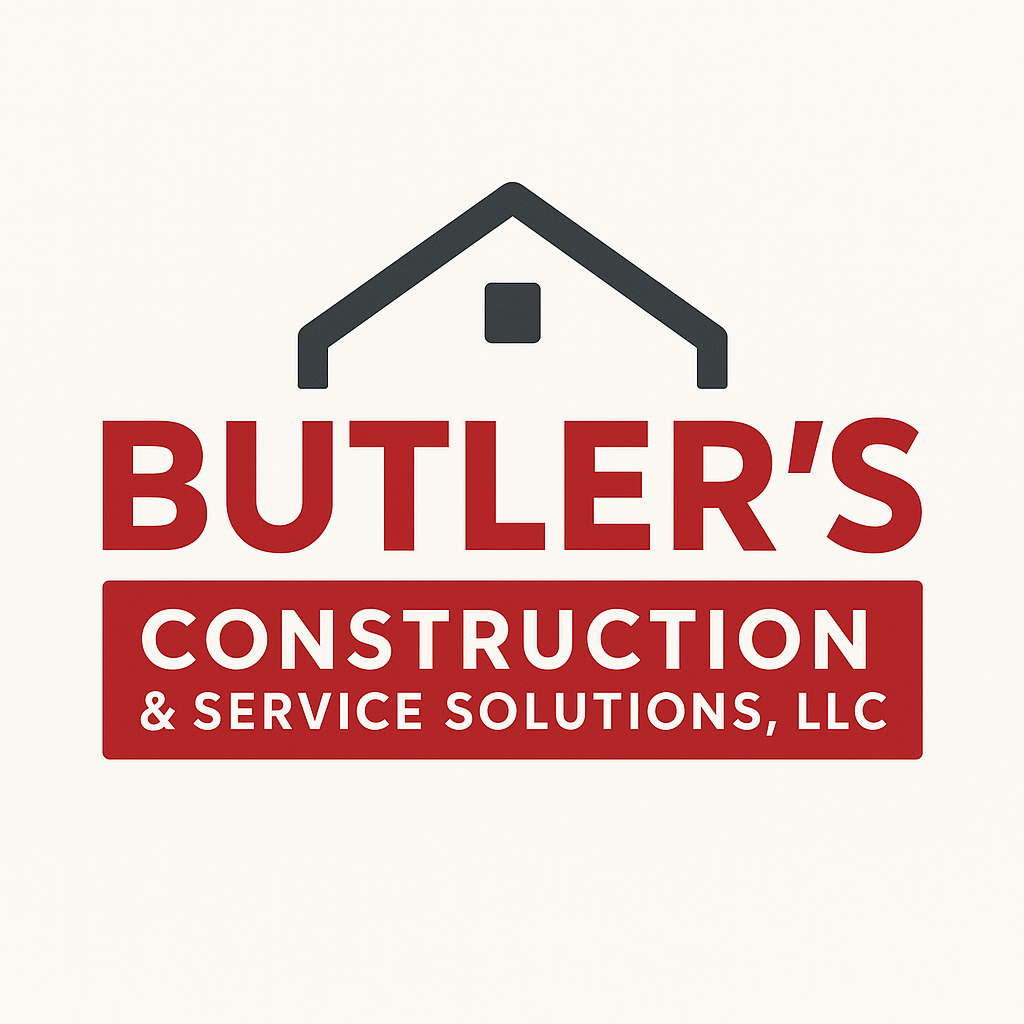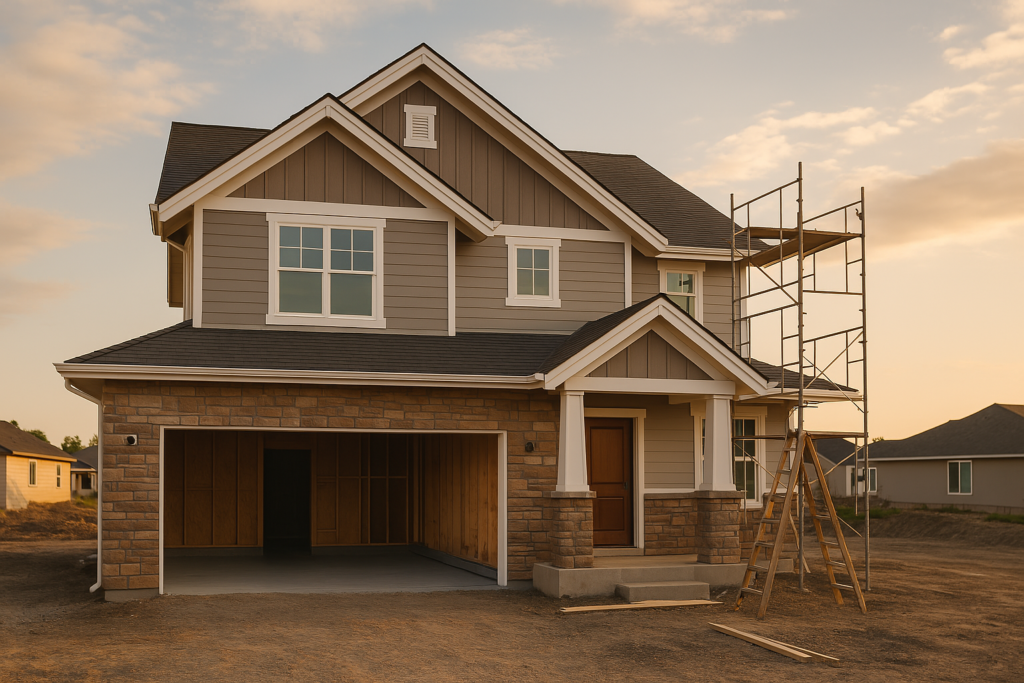Construction loans for homes work differently than traditional mortgages. These specialized financing options help people build new homes from scratch, unlike standard home loans. The loan duration typically spans a year or less, with interest rates running about one percentage point above conventional mortgages due to their lender’s increased risk.
Building a dream home requires a clear understanding of construction lending basics before starting the project. The loan’s structure allows funds to be released in stages called “draws” as construction milestones are met, rather than providing the full amount upfront. Borrowers pay interest only on the drawn amounts during construction instead of the total loan balance. The qualification process proves more demanding than traditional loans and demands a credit score of at least 680 along with a 20% down payment.
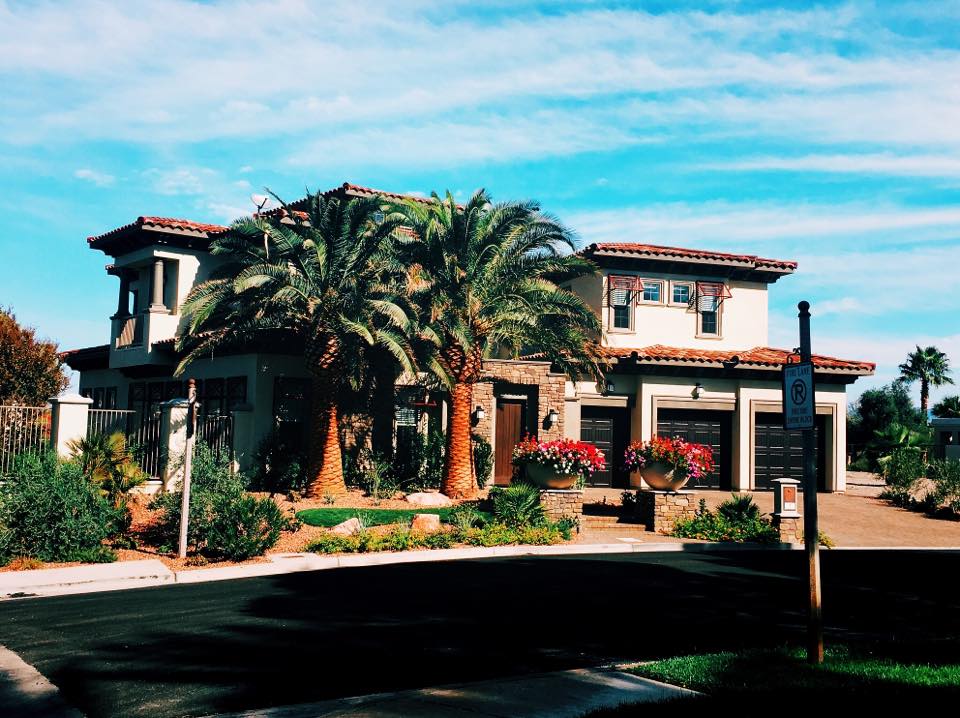
What is a construction home loan?
A construction home loan helps fund the building of a new house from the ground up. Building a custom home needs money at different stages, unlike buying an existing house. These loans bridge the gap by offering short-term financing that covers everything from land purchase to the final touches on your new home.
How it is different from a traditional mortgage
Construction loans work differently from standard mortgages. Traditional mortgages give you all the money upfront at closing. However, construction loans release funds in stages called “draws” as each building phase moves forward. You’ll only get these draws after inspectors check and confirm that each construction phase is complete.
The repayment structure looks nothing like a regular mortgage. You’ll only pay interest on the amounts you’ve actually used during the building phase. These loans also run for much shorter periods (usually 12 to 18 months instead of the 15-30 years you get with regular mortgages).
Getting approved for this loan takes more work. Lenders want to see much more than just your financial details. You’ll need to show detailed construction plans, budgets, timelines, and your builder usually needs approval too. It’s worth mentioning that these loans need bigger down payments (20-30% compared to 3-20% for regular mortgages) and come with higher interest rates – about one percentage point above normal mortgage rates.
At what point you might need one
We needed construction home loans mainly to build custom homes outside developer-managed subdivisions. This helps finance the whole project from day one until the final inspection.
These loans become crucial if you’re the owner-builder, though qualifying gets tougher. You might also want to look at specialized construction loans for remodeling if your renovation plans cost more than what personal loans or home equity can cover.
The construction loan needs to be paid off completely once the building is done (using cash or money from selling another property), or you can switch it to a regular mortgage. Many people pick construction-to-permanent loans that automatically become standard mortgages after building finishes. This saves them from paying closing costs twice.
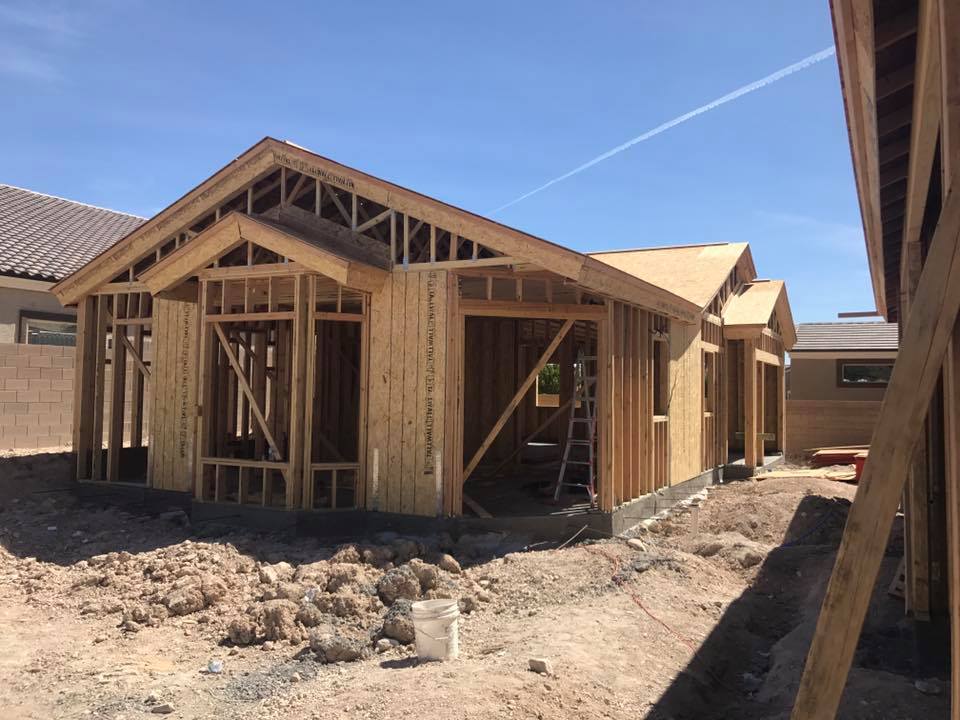
How construction home loans work
Construction lending works differently from other types of financing. The bank doesn’t give you all the money upfront for construction loans. Instead, you get the funds in stages as your building project moves forward. This method helps both lenders and borrowers manage their risks better during construction.
Loan disbursement in stages (draws)
Home construction loans release money in installments called “draws” that line up with key points in your building timeline. The lender releases each draw payment after they confirm you’ve finished the previous construction phase properly. A lender’s inspector comes to review the construction progress before releasing any funds.
The draw schedule maps out your project’s funding path and shows when you’ll get each payment. These stages usually include:
- Site preparation and foundation work
- Framing and rough mechanical systems
- Interior finishing work
- Final completion and inspections
The bank pays these draws straight to your contractor or builder instead of you. This direct payment setup helps contractors get paid on time and reduces the chance of liens on your property.
Interest-only payments during construction
During the building phase, you’ll only pay interest on the money you’ve actually used—not the full loan amount. Your monthly payments start small and grow as the bank releases more construction funds.
You can figure out these payments by taking the amount you’ve used, multiplying it by the interest rate (as a decimal), and dividing by 12. Construction loans usually cost about one percentage point more than regular mortgages because they’re riskier for banks.
Typical construction loan terms and timelines
Construction loans don’t last long—usually 12 to 18 months. This gives you enough time to finish most home projects, though some complex builds might need more time.
You must either pay off the loan or switch it to a regular mortgage once construction ends. Most people choose construction-to-permanent loans that automatically become standard mortgages after building is done. This saves you from going through another closing process.
Getting approved for a construction loan takes about 30 to 60 days, depending on things like appraisals and underwriting schedules. This gives you time to get your plans ready and prepare for construction.
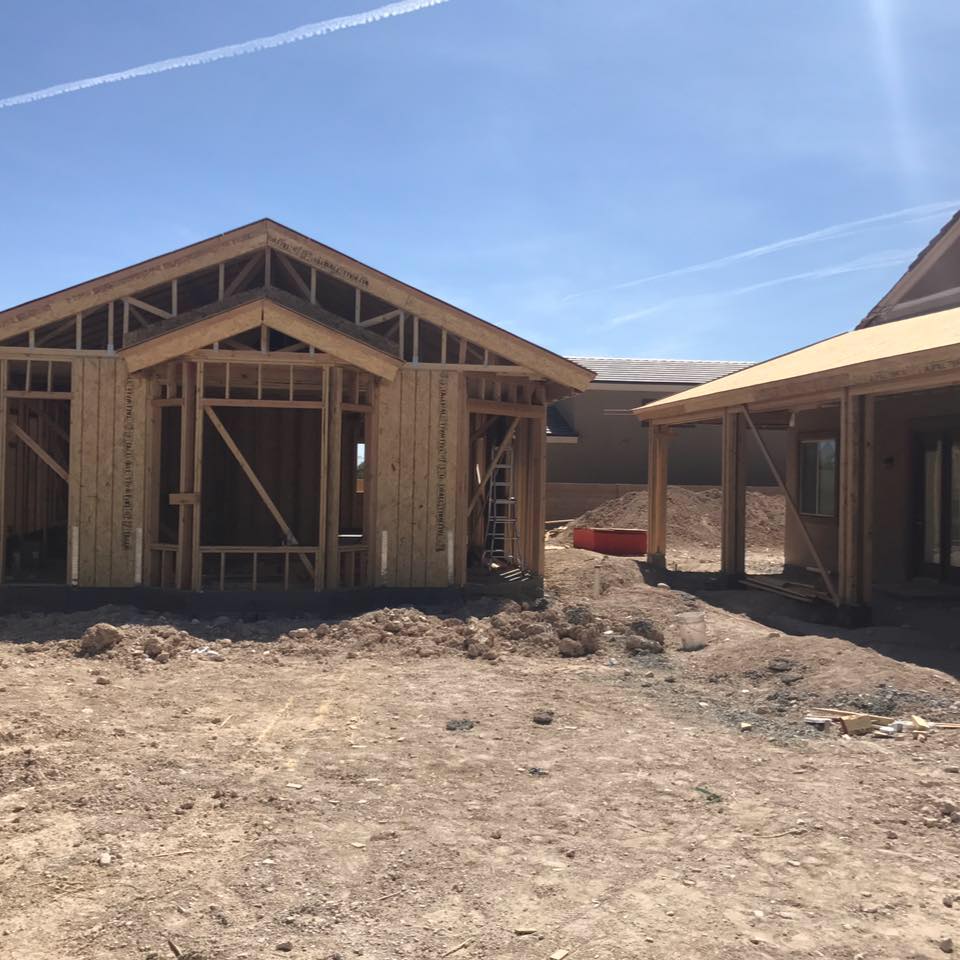
Types of construction loans available
Construction loans come in several distinct types that match different homebuilding needs. Each type has unique features that work best for specific building scenarios and borrower requirements.
Construction-to-permanent loans
These loans combine building financing and mortgage into a single product. You’ll only need one closing process and pay one set of fees. People often call them “one-time close” loans because they automatically become a standard mortgage after construction ends. The building phase requires interest-only payments on drawn amounts. The loan switches to a conventional mortgage with principal and interest payments once construction wraps up.
You can save money on closing costs while getting your long-term financing secured upfront. The loans usually come with fixed or adjustable rates and 15-30 year terms. Government versions include FHA construction-to-permanent loans with easier approval standards and VA construction loans that veterans might qualify for.
Construction-only loans
Construction-only loans work differently. They fund just the building process and become due when construction ends. You’ll need cash or a separate mortgage (called an “end loan”) to pay off the debt.
This option might give you better mortgage terms later, but it costs more because you pay for two transactions with two sets of closing costs. Your financial situation could also change during construction, making it harder to qualify for the final mortgage.
Owner-builder construction loans
Owner-builder loans let you be your own general contractor. You might save money on contractor markups, but these loans have strict requirements. Most lenders want borrowers with professional building experience or contractor licenses.
The down payments run higher (about 35% of total project cost) and credit scores must be excellent (usually minimum 725). You get more control over your project, but all management tasks become your responsibility.
Home construction loans for remodeling
Renovation loans help you finance major improvements to existing homes. The loan amount depends on what your home should be worth after renovations rather than its current value.
Options include FHA 203(k) loans with lower down payments, VA renovation loans for veterans, and conventional choices like Fannie Mae HomeStyle or Freddie Mac CHOICERenovation. Some lenders provide smaller renovation loans with simplified requirements to cover cosmetic, non-structural improvements.
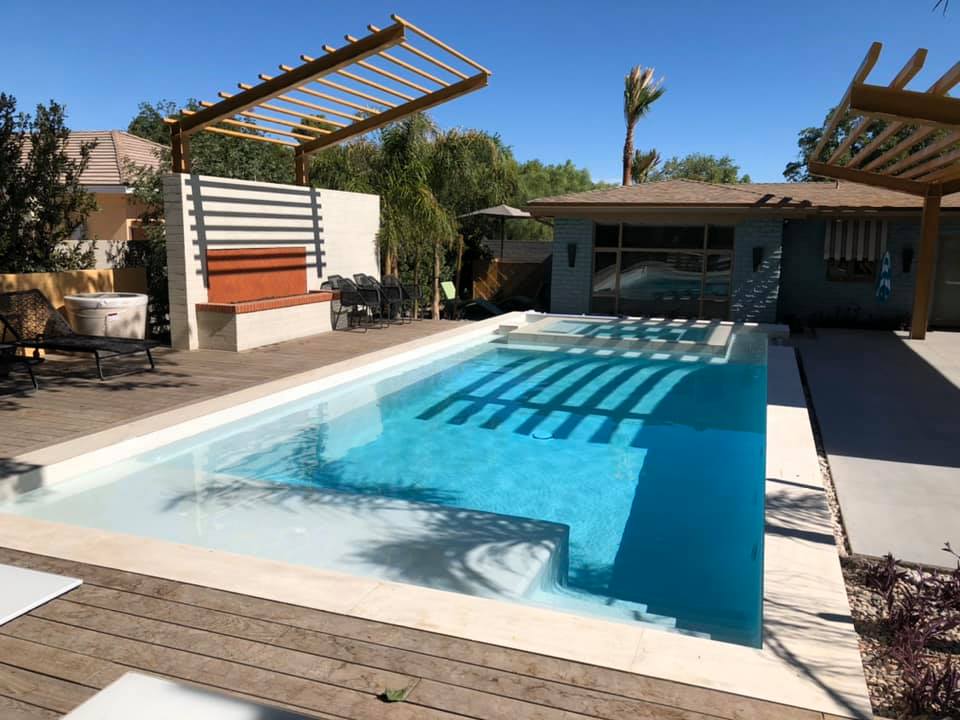
What you need to qualify for a construction loan
Home construction loans need stricter qualifying criteria than traditional mortgages. Lenders face higher risks with unbuilt properties, so getting approval requires careful preparation in several areas.
Credit score and income requirements
Strong financial credentials are the life-blood of construction loan approval. Most lenders want a credit score of at least 620, though many prefer 680 or higher. You might qualify for government-backed options like FHA construction loans with a score as low as 580 if you can put down a larger payment.
Your debt-to-income (DTI) ratio should stay below 41-43%. Lenders look at this ratio to make sure you can handle construction loan payments with your existing financial commitments. You’ll also need stable employment—they usually verify two years of steady income through tax returns, W-2s, and recent pay stubs.
Down payment expectations
You’ll need bigger down payments for construction loans compared to conventional mortgages. The minimum contribution starts at 20% of the total project cost. Some lenders ask for 25% or more based on how complex your project is.
Government-backed programs give you more flexibility—FHA construction loans ask for just 3.5% down with a credit score of 580+. Your land’s equity might count toward the down payment requirement if you own it outright.
Builder approval and project documentation
Lenders must approve your builder before moving forward. Your contractor needs:
- Proper licensing and insurance
- Liability coverage and worker’s compensation
- Minimum two years of experience building homes
- Track record of successful projects
Complete project documentation plays a huuuuge role. You’ll need detailed construction plans, specifications list, line-item budget, payment schedule, and blueprints. Larger projects might need a feasibility study, environmental reports, and engineer certifications. These documents show your project’s viability and readiness quickly.
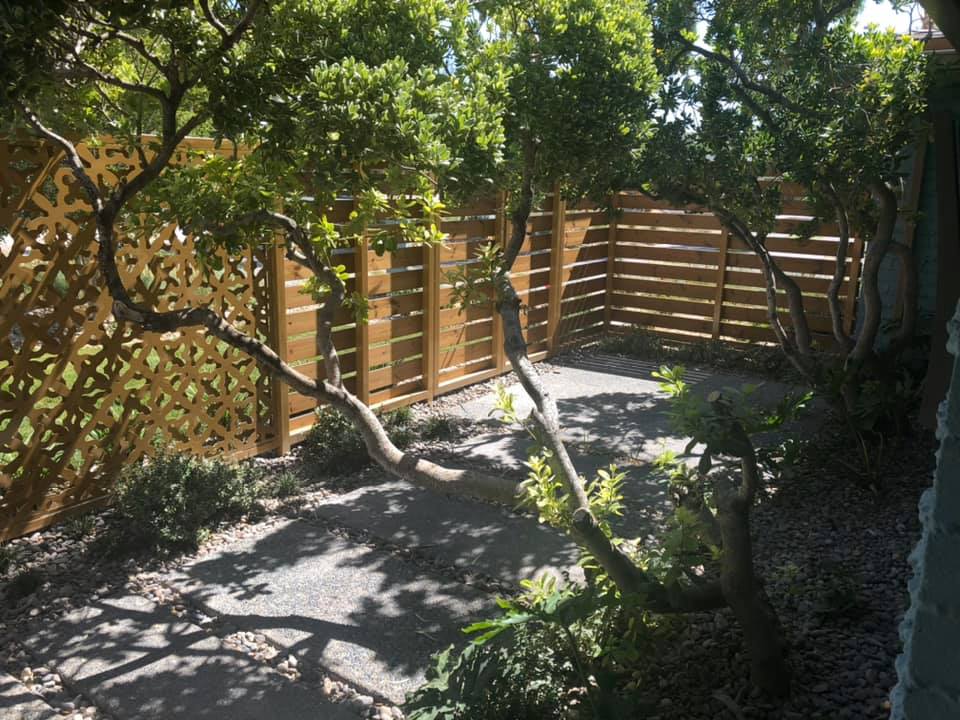
Conclusion
Building your dream home with a construction home loan takes more preparation than regular mortgages. These loans work differently – you get the money in stages instead of all at once. You’ll only pay interest during construction, and the loans usually last 12-18 months before you need to convert or repay them.
The right loan type can make a huge difference in your building experience. A construction-to-permanent loan keeps things simple with just one closing. Construction-only loans might be better if you have specific plans for permanent financing. If you have experience and want to run the project yourself, owner-builder loans are worth looking into. Major improvements to existing properties work well with renovation loans.
Getting approved for these loans isn’t as easy as regular mortgages. Lenders usually want a credit score of at least 680 and a down payment of 20% or more. You’ll also need detailed project documentation. Your builder needs to meet specific requirements too – proper licensing, insurance, and solid experience are must-haves.
Take a good look at your finances and building plans before you start your project. Talk to several lenders about their terms and requirements (they can be quite different) The right construction loan that fits your needs will set you up for success and protect your money.
These loans might look complicated at first. A grasp of how they work and what they need will help you direct the building process confidently and turn your custom home dreams into reality.
Construction Home Loan FAQs
What’s the main difference between a construction loan and a traditional mortgage?
Construction loans disburse funds in stages as building progresses, while traditional mortgages provide a lump sum at closing. During construction, you typically make interest-only payments on the amount drawn, not the full loan amount.
How much down payment is typically required for a construction loan?
Most lenders require a down payment of at least 20% of the total project cost for construction loans. Some may ask for 25% or more, depending on the project’s complexity. Government-backed programs like FHA loans may offer lower down payment options.
Can I act as my own contractor with a construction loan?
Yes, some lenders offer owner-builder construction loans. However, these typically have stricter requirements, including higher down payments (around 35%) and excellent credit scores (minimum 725). Most lenders only approve borrowers with professional building experience or contractor licenses.
What happens when the construction is complete?
Once construction is finished, you either need to pay off the construction loan in full or convert it to a permanent mortgage. Many borrowers opt for construction-to-permanent loans, which automatically transition to a standard mortgage after building concludes, saving on closing costs.
What kind of documentation is needed to qualify for a construction loan?
In addition to standard financial qualifications, you’ll need to provide detailed construction plans, a line-item budget, a payment schedule, and blueprints. Lenders will also want to approve your chosen builder, checking their licensing, insurance, and track record of successful projects.
